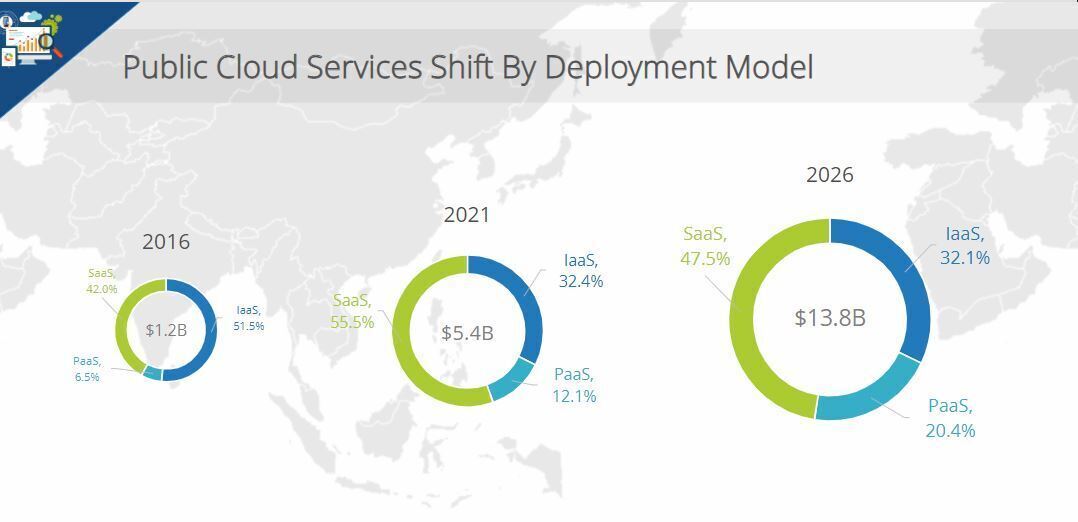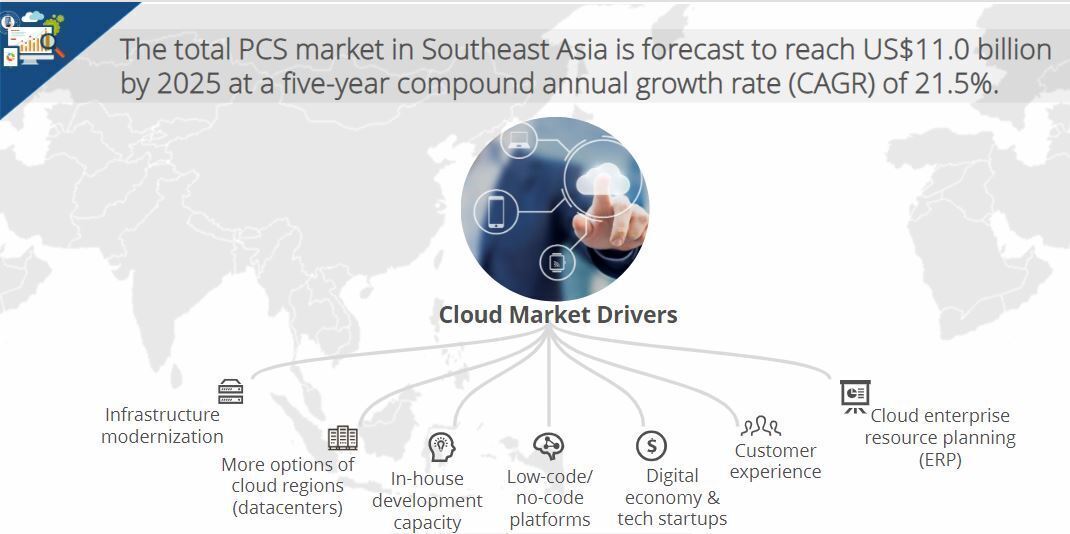
Businesses big and small in Southeast Asia are going up and up and away—and into the cloud.
That is the assessment of International Data Corporation (IDC) in its quarterly report, “An Outlook on Southeast Asia’s Cloud Trends, Adoption and Opportunities.” The firm presented the report’s overriding theme and its relevant findings to selected media in an exclusive virtual media brief held on the 23rd of August.
“Despite the uncertainties (of the post-pandemic landscape), cloud spending [in Southeast Asia] remains strong… as the cloud opens up doors for enterprises to enable new digital capabilities and new business models,” explained Prapussorn Pechkaew, Research Manager, Data & Analytics Group, at IDC, who presented the report.

It is not the least bit surprising that the organisations in the region are turning to the cloud more and more. Leading the way are businesses in Vietnam, whose cloud market has seen a Compound Annual Growth Rate (CAGR) of 32% from 2018 to 2023. Organisations in Indonesia and the Philippines are not far behind, with a cloud market CAGR of 31% over the same period. Companies in Thailand (26%), Malaysia (25%) and Singapore (22%) are doing much of the same, underscoring the continuing rise of the cloud in Southeast Asia.
Migrate to Thrive: Cloud Adoption as a Business Differentiator
Pechkaew further explained that leveraging the cloud is crucial to remain competitive in the so-called new normal, in which uncertainty is compounded by geopolitical tension, inflation and other global issues. The cloud, according to Peckaew, helps in realigning IT services to meet the challenges of the post-pandemic business landscape and in enabling digital transformation in a digitalising world.
Organisations in the region seem to be aware of the cloud’s primordial role in this new normal, as already evidenced by growing cloud adoption across Southeast Asia. That trend will not only continue in the next few years but also intensify, with as much as 76% of organisations in the region planning to spend their cloud spending. Thailand leads the way in this case, with 92% of businesses surveyed by the IDC admitting their plans to spend more on the cloud, followed by Malaysia (86%) and Indonesia (81%).
Much of this cloud migration is happening in the public cloud, with ASEAN organisations opting to use public clouds via the Software-as-a-Service (SaaS) and Infrastructure-as-a-Service (IaaS) deployment models. Of the USD $5.4 billion spent on cloud services, in fact, 55.5% was spent on SaaS cloud deployment, while 32.4% was spent on the IaaS model. The remaining 12.1%, meanwhile, was spent on the third cloud deployment model, Platform-as-a-Service (PaaS).

Drivers to Cloud Adoption
That spending is forecast to more than double to USD $11 billion by 2025, driven primarily by seven key drivers— the most notable being the rise of the digital economy and tech startups in the region. This is closely followed by the growing need for infrastructure modernisation and the emergence of low code/no code platforms, both of which are keys to digitalisation and modernisation. Also driving greater cloud adoption include the need to improve customer experience and in-house development capacity, the growing reliance on cloud enterprise resource planning and the growing availability of cloud regions or data centres.

Southeast Asian governments are also keenly aware of the benefits of being in the cloud, and they themselves are pushing for cloud adoption through government mandates and initiatives. Indonesia, for instance, has the National Data Centre for Government to promote data-driven policymaking and safe and efficient data operations. Malaysia, which is in the midst of a government-initiated digitalisation journey, had instituted the Light Touch Regulation on Cloud Services, while Vietnam has included cloud adoption under its larger Digital Government Strategy for 2021–2025. Other governments in the region have initiated their own digital transformation mandates, and the cloud plays a key role in most of them.
(Mostly) Clear Skies Ahead for the Cloud
Between organisations in Southeast Asia recognising the business benefits of cloud adoption and ASEAN governments pushing for modernisation, the cloud figures to have exciting days ahead in the region. Cloud adoption, however, will be greeted by some challenges, and the most formidable, according to Pechkaew, is the need for relevant skills.
“Of the challenges, what frequently pops up is about skills,” admitted Pechkaew in response to a question about the most pressing challenges related to cloud use. “It’s not just the skills of the tech buyers themselves; it’s also the skills of the tech providers in the local market as well. One of the challenges [in terms of skills] is how organisations can manage their different cloud services from different providers.”
It is a daunting challenge, indeed, but not an impossible one to address with some major upskilling and reskilling across the region. That, in fact, maybe happening right about now, especially with both governments and businesses cognisant of the many benefits of being in the cloud.





